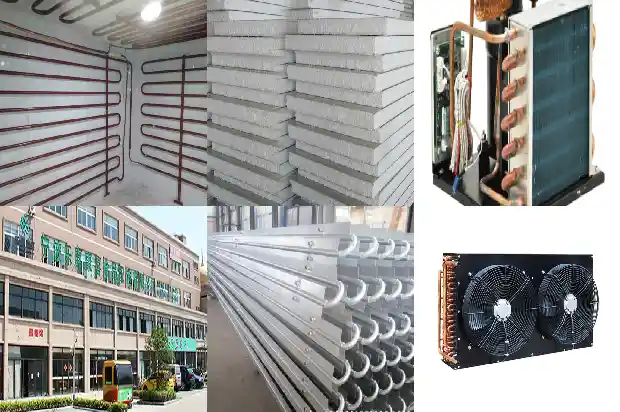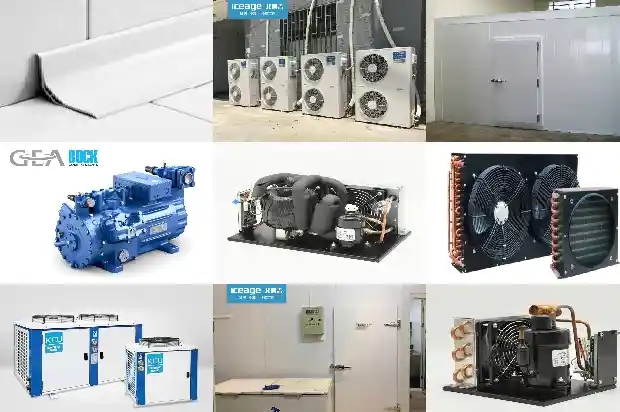Selection of Bypass Control Valves for Air - conditioning Water Systems
2025-02-14
To ensure the relatively constant flow rate of chillers in the air - conditioning chilled - water system and the stable operating conditions of chilled - water pumps, the commonly adopted approach is as follows: The load side is designed with variable - flow, controlling the water flow rate of terminal devices. Specifically, an electric two - way valve is used as the regulating device for terminal devices to control the chilled - water flow into them. A differential - pressure bypass control device is installed on the cold - source side to maintain a constant chilled - water flow in the cold - source part.
However, in practical engineering projects, designers often overlook the importance of calculating and selecting control valves. During the design process, they usually just simply install a bypass pipe between the chiller and the user side. The determination of the diameter of the bypass pipe and the selection of the bypass control valve are often made without detailed calculations. As a result, in actual operation, the stability of the chiller's flow rate often differs significantly from the design. The bypass device generally fails to achieve the expected effect, causing unnecessary troubles for future operation and management.

Conclusions:
(1) Determining the flow capacity C of the control valve is a crucial step in selecting the control valve. Only when the flow capacity C is calculated correctly can the control valve possibly meet the process requirements.
(2) The valve capacity PV of the control valve is also one of the important indicators for selecting the control valve.
(3) The actual adjustable ratio Rs of the control valve is one of the parameters determining whether the control valve can meet the process requirements. The actual adjustable ratio is often much smaller than the ideal adjustable ratio. However, when selecting the control valve, efforts should be made to make the actual adjustable ratio as close to the maximum value as possible.
(4) The maximum and minimum flow rates that the control valve can pass through are key aspects of the selection calculation. These two values should be jointly determined by the actual adjustable ratio and the process requirements.
(5) Through engineering examples, it can be seen that calculating the diameter of the bypass pipe is also important. If the same diameter as the control valve is selected without calculation, it cannot meet the process requirements.
(1) Determining the flow capacity C of the control valve is a crucial step in selecting the control valve. Only when the flow capacity C is calculated correctly can the control valve possibly meet the process requirements.
(2) The valve capacity PV of the control valve is also one of the important indicators for selecting the control valve.

(3) The actual adjustable ratio Rs of the control valve is one of the parameters determining whether the control valve can meet the process requirements. The actual adjustable ratio is often much smaller than the ideal adjustable ratio. However, when selecting the control valve, efforts should be made to make the actual adjustable ratio as close to the maximum value as possible.
(4) The maximum and minimum flow rates that the control valve can pass through are key aspects of the selection calculation. These two values should be jointly determined by the actual adjustable ratio and the process requirements.
(5) Through engineering examples, it can be seen that calculating the diameter of the bypass pipe is also important. If the same diameter as the control valve is selected without calculation, it cannot meet the process requirements.
From the above five points, it can be seen that differential - pressure control valves play a relatively important role in regulating and controlling the air - conditioning chilled - water system. Only through careful calculation can the selected differential - pressure control valves meet the process requirements.
Related Articles
- Reference Points for Selection of Screw - type Chillers
- Selection and Installation of Thermal Expansion Valves
- Function and Selection of Buffer Tanks
- Introduction to Control Valves in Refrigeration Systems
- Maintenance Strategies for the Working Cycle and Electrical Automatic Control of Chillers
- What are the Storage Conditions of Nectarine in Controlled Atmosphere Cold Storage?
- Liquid Level Detection and Control of Flooded Evaporators
- Water Flow Control Technology for Small Air-cooled Hot and Cold Water Units
- New Technology: A New Control Method for Throttle Valves in Refrigeration Systems
- Defrosting Operation Modes of Refrigeration Equipment and Its Control Components
- Automated Control of Refrigeration Systems
- Working Principle and Control Logic of Centrifugal Compressor
- Conditions for Storage of Persimmons in Controlled Atmosphere Cold Storage
- Reasons for Higher Cost of Controlled Atmosphere Cold Storage than Ordinary Cold Storage
- Common Pressure Valves and Protection Devices in Refrigeration Units
- What Causes Noise in Pressure Reducing Valves?
- Precautions for Inspecting Valves in Refrigeration Systems
- Influence of Fin Spacing of Evaporator in Air Cooler on Frost Formation
